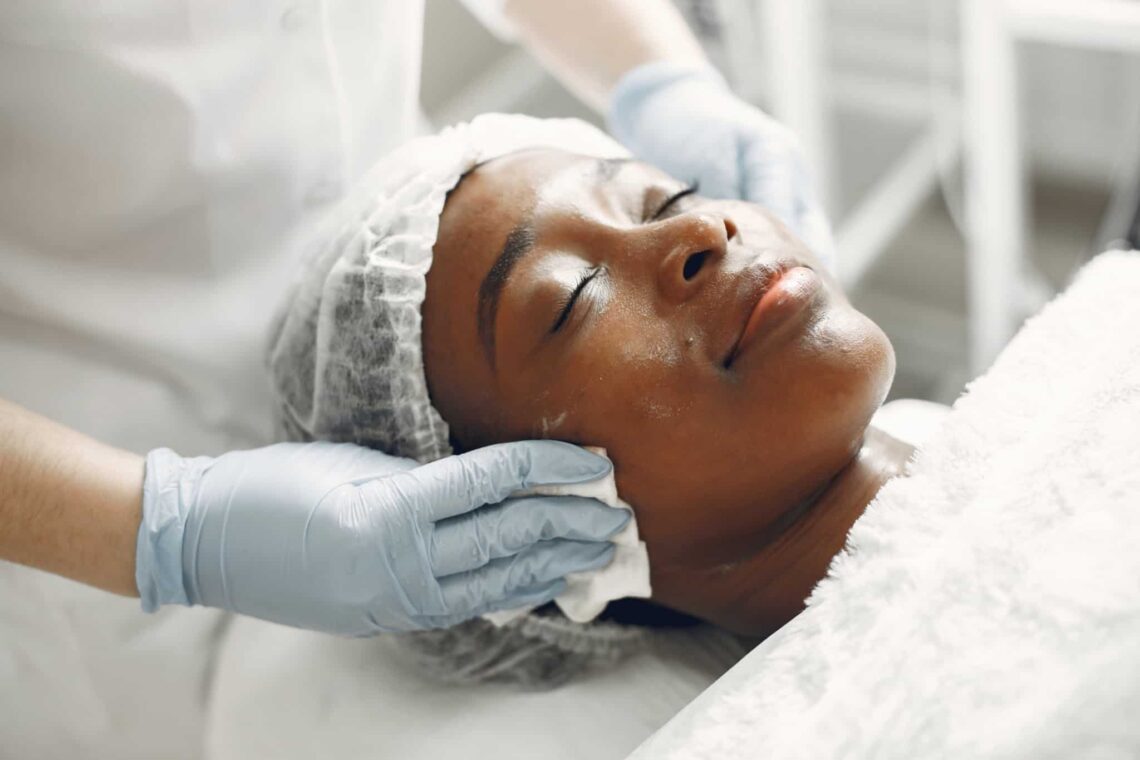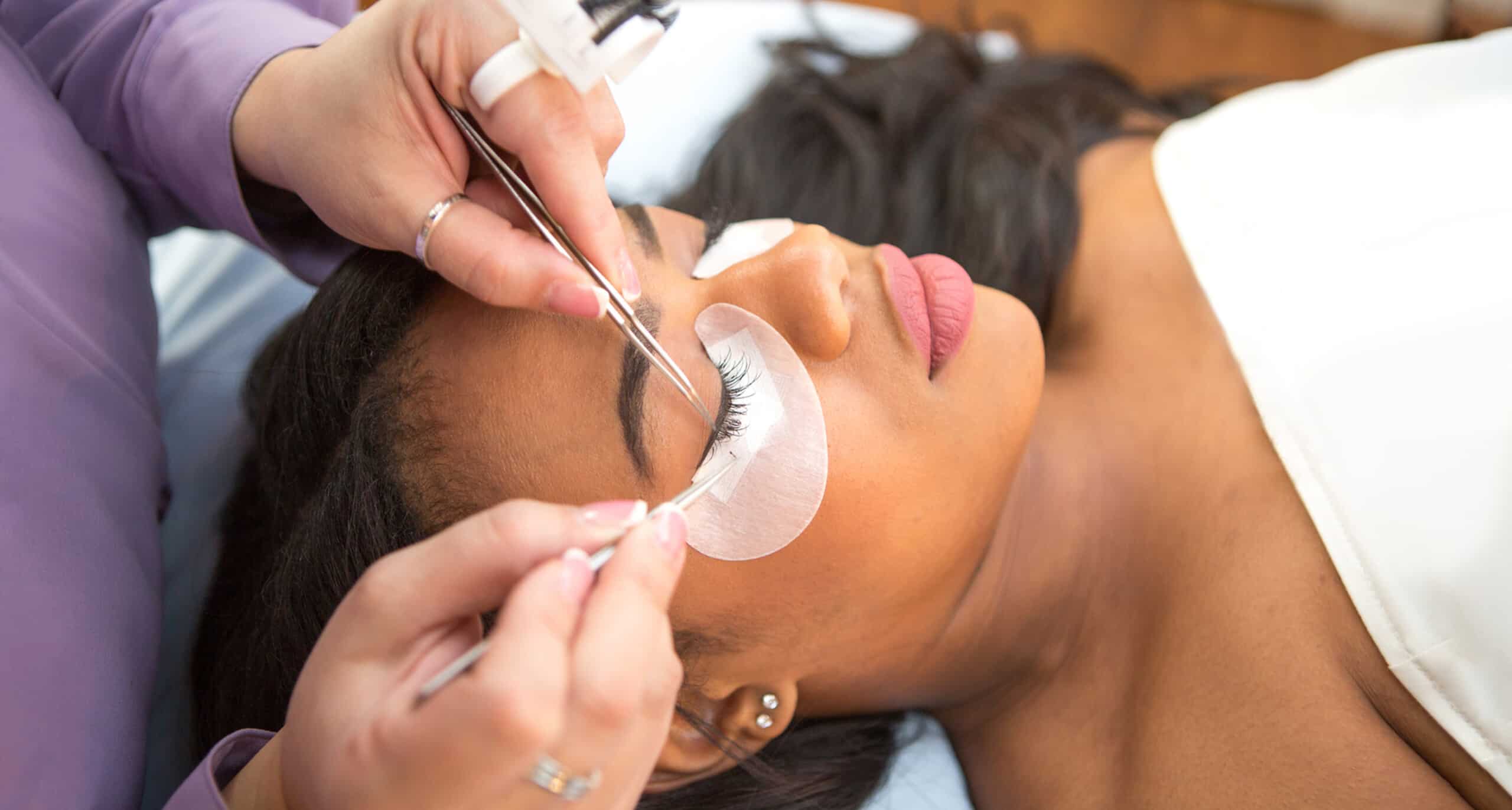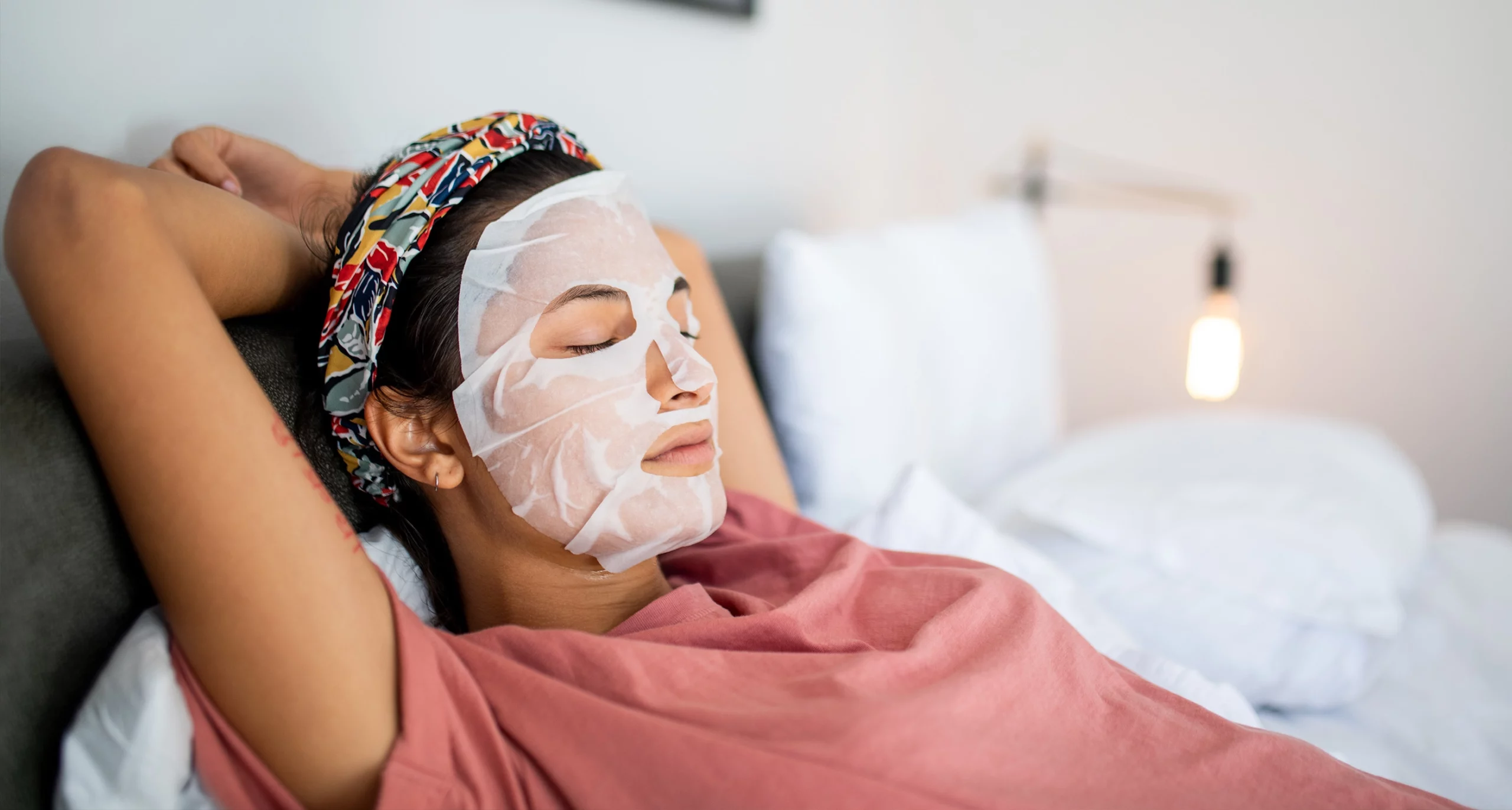How to Depuff Your Face in 8 Simple Steps

If you tend to wake up and find your face looking a little like a marshmallow, you’ve probably had some thoughts that aren’t so sweet. Yet, many people struggle with the issue of a puffy face and puffy eyes. Whether you’re on the search for qualified estheticians or are interested in at-home methods that will help reduce and prevent facial bloating, you’ve landed in the right place.
Though it can have many causes, facial puffiness is most commonly linked to your body’s fluid retention. The good news is, there are some tried-and-true methods to reduce face puffiness.
In this article, we’ve gathered eight of the top tips and tricks you need to depuff your face and achieve the slim, contoured features you’ve always wanted.
Step 1: Stay Hydrated
Water is important for many of the functions in your body, so it’s no surprise that it also affects whether your face becomes puffy.
You might assume that drinking too much water would contribute to fluid retention, but as it turns out, it’s actually the opposite. When you don’t drink enough water, your body may start to hold onto the fluids it does have to help keep your biological systems running.
So, how much water should you drink in a day to stay hydrated and help your face and body get rid of excess water? Medical experts recommend getting about 90 ounces for women and 125 ounces for men.
Step 2: Chill Out
If you frequently deal with a puffy face first thing in the morning, another easy and inexpensive method to try is to apply something cold to your face. There’s a reason why we’re told to ice our injuries. Studies show that cold therapy can reduce swelling, inflammation, and even help reduce water retention.
There are several techniques you can use, including:
- Splashing cold water on your face
- Applying a cold compress or cold towel
- Using skin care tools that have been chilled in the fridge like an ice roller or jade roller
As a bonus, an invigorating burst of cold sensations first thing in the morning could also help you feel more awake and refreshed.
Step 3: Sleep Well

There may be more to the phrase “beauty sleep” than you think. One dermatologist suggests that in addition to getting enough sleep, the position you sleep in can affect puffiness, swelling, and inflammation.
But how should you be sleeping to alleviate facial puffiness? The recommendation is to sleep face-up and elevate your head slightly, usually by propping it up with an extra pillow, to a level slightly above your heart. Compared to lying with your head at the same level of your body, this should help reduce the fluid buildup in your lymphatic system that causes swelling and inflammation.
The extra benefit? When you sleep face up, you’re less likely to wake up with any of those dreaded sleep creases.
Step 4: Perk Up with Caffeinated Topicals
No, we’re not talking about drinking coffee or green tea—though that can certainly help you feel more awake. If your puffiness is especially apparent under the eyes, you may want to look for an eye cream that contains some caffeine.
How does this help? Skin products that contain caffeine may aid in reducing swelling and inflammation by causing the blood vessels under the skin to constrict. In addition to reducing puffiness, this may also help to tighten and brighten the skin under your eyes to reduce the appearance of dark circles and eye bags.

Step 5: Use the Right Tools
If you’ve already spent some time researching how to depuff your face, you’ve probably come across various tools recommended for their use in facial massage. Whether it be a Gua Sha vs. jade roller, facial massage tools are said to provide numerous benefits, including:
- Improved circulation
- Firmer skin
- Relief from tension and stress
The question is, can massaging your face with these tools really help reduce puffiness? Further studies on this topic are needed, but those who advocate for these tools suggest that because the massaging techniques help promote lymphatic drainage, they could also lead you to obtaining a slimmer, sharper face. Now, all that’s left is to learn how to use a Gua Sha.
Step 6: Get Some Light Therapy
Though light therapy wands and masks can look a little like science fiction, research actually supports the use of light therapy for multiple skincare benefits, including an increase in the production of collagen and reduced inflammation. If you’re trying to find out how to depuff face, this could be the solution you need.
It’s important to note that light therapy is not the same thing as using a tanning bed, which uses UV rays that can be harmful to the skin and even cause cancer. If you try this method, you’ll want to look for light therapy products that use LED light, which is safer for your skin.
Step 7: Try a Dry Brush
Dry brushing is another technique you have to try to believe. This method involves the use of a brush with stiff bristles to massage the skin. Similar to facial rollers and massage tools, dry brushing may help reduce facial puffiness by encouraging drainage of the lymphatic system.
If you’re wondering how to reduce puffy face with a dry brush, you’ll be happy to know that the steps are fairly simple. To dry brush your face, you’ll want to use a brush smaller than those made for your body. After that, follow these steps:
- Before you dry brush, your skin should be clean and dry.
- Start at the chin and begin to brush upward with gentle pressure, brushing your chin, cheeks, temples, and forehead.
- You can also use the brush on your chest and neck, brushing upward from the collarbone area.
As another plus, dry brushing can also help exfoliate your skin, improve circulation, and stimulate your nervous system.

Step 8: See a Professional
If you’ve tried everything and still aren’t seeing any results, or if your facial puffiness seems to be getting worse, it may be time to consider seeing a professional.
Some medications and medical conditions can cause bloating and swelling in the face, meaning that even if you’re pulling out all the stops to combat your facial puffiness, there could be an underlying issue working against you. And if you’re suddenly experiencing facial puffiness but never did before, that’s a sure sign to seek professional advice.
After seeing your doctor, you may also want to try visiting a facial esthetician or other skin care professional. While jade rollers and Gua Sha are great tools to reduce puffiness at home, a trained expert can offer you other services, such as a lymphatic massage, to help speed up the process.
How to Prevent Puffiness
If you notice that your face seems puffy on a regular basis, there are a number of things that could be causing it. Apart from medical conditions, which should be treated by a medical professional, there are some common causes of facial swelling, bloating, and puffiness that can help you pinpoint how to reduce puffiness on a routine basis.
Let’s take a look at some other tips for how to get rid of puffy face—and how to prevent it from happening in the first place.
- Dehydration – As we’ve already mentioned, staying hydrated is crucial for your body to maintain the right balance of fluids. If you’re not sure if you’re drinking enough water, try filling up a few water bottles each day to measure your intake. Having them around will also remind you to drink more water throughout the day.
- Alcohol – Drinking alcohol is linked to facial puffiness because, just like not drinking enough water, it can cause your body to become dehydrated and therefore retain more water than it would otherwise. If you notice that your face tends to be more puffy after a night of drinking, alcohol could be a contributor. While you may not need to cut out alcohol entirely, it’s a good idea to make sure you’re also drinking enough water both during and after a night out.
- Salt – Salt, or sodium, is one of the main causes of excessive water retention. If you typically eat a lot of salty foods or consume a lot of foods made with sodium, this could be another area to consider cutting back to prevent a puffy face.
- Carbohydrates – Research has shown that when you eat carbs, your body stores more water than when you eat other foods. Does this mean you have to cut out bread, cake, and pasta completely? Not necessarily. But when you make dietary choices, it’s good to keep in mind that moderating your carb intake could help reduce puffiness, too.
- Not enough sleep – We’ve all had rough nights now and then. But if you’re regularly not getting enough sleep, it could contribute to your facial puffiness, not to mention other factors of your health. The solution to this is pretty straightforward: try to get at least seven hours of sleep at night, preferably eight, and you’re likely to see reduced puffiness.
Glow Up with StyleSeat
Getting rid of facial puffiness can be frustrating, especially when it feels like you’ve tried everything. Luckily, however, many skin care professionals and estheticians now offer consultations and services to help alleviate the symptoms of facial swelling and bloating.
If you’ve been trying to figure out how to depuff your face and could use some expert advice, let your search end with StyleSeat.
With our directory of services and beauty experts, you’re sure to find the help you need to get rid of facial puffiness for good. Whether you are looking for an expert facialist in Atlanta or a qualified esthetician in Houston, we can help assist you in your search starting today.
Sources:
PubMed. Just Add Water. https://pubmed.ncbi.nlm.nih.gov/18385417/
Cleveland Clinic. How Much Water Do You Need Daily? https://health.clevelandclinic.org/how-much-water-do-you-need-daily/
PubMed. Mechanisms and efficacy of heat and cold therapies for musculoskeletal injury. https://pubmed.ncbi.nlm.nih.gov/25526231/
Refinery29. Can Your Sleeping Position Hurt Your Skin? This Is What An Expert Thinks.https://www.refinery29.com/en-gb/sleep-position-affect-skin-lines-wrinkles
Skincare Lab. Caffeine in Skincare: What Are the Benefits and Uses? https://www.skincarelab.org/caffeine-in-skincare/
PubMed. A Controlled Trial to Determine the Efficacy of Red and Near-Infrared Light Treatment in Patient Satisfaction, Reduction of Fine Lines, Wrinkles, Skin Roughness, and Intradermal Collagen Density Increase. https://www.ncbi.nlm.nih.gov/pmc/articles/PMC3926176/
Cleveland Clinic. The Truth About Dry Brushing And What It Does For You. https://health.clevelandclinic.org/the-truth-about-dry-brushing-and-what-it-does-for-you/
PubMed. Muscle glycogen storage and its relationship with water. https://pubmed.ncbi.nlm.nih.gov/7068293/



